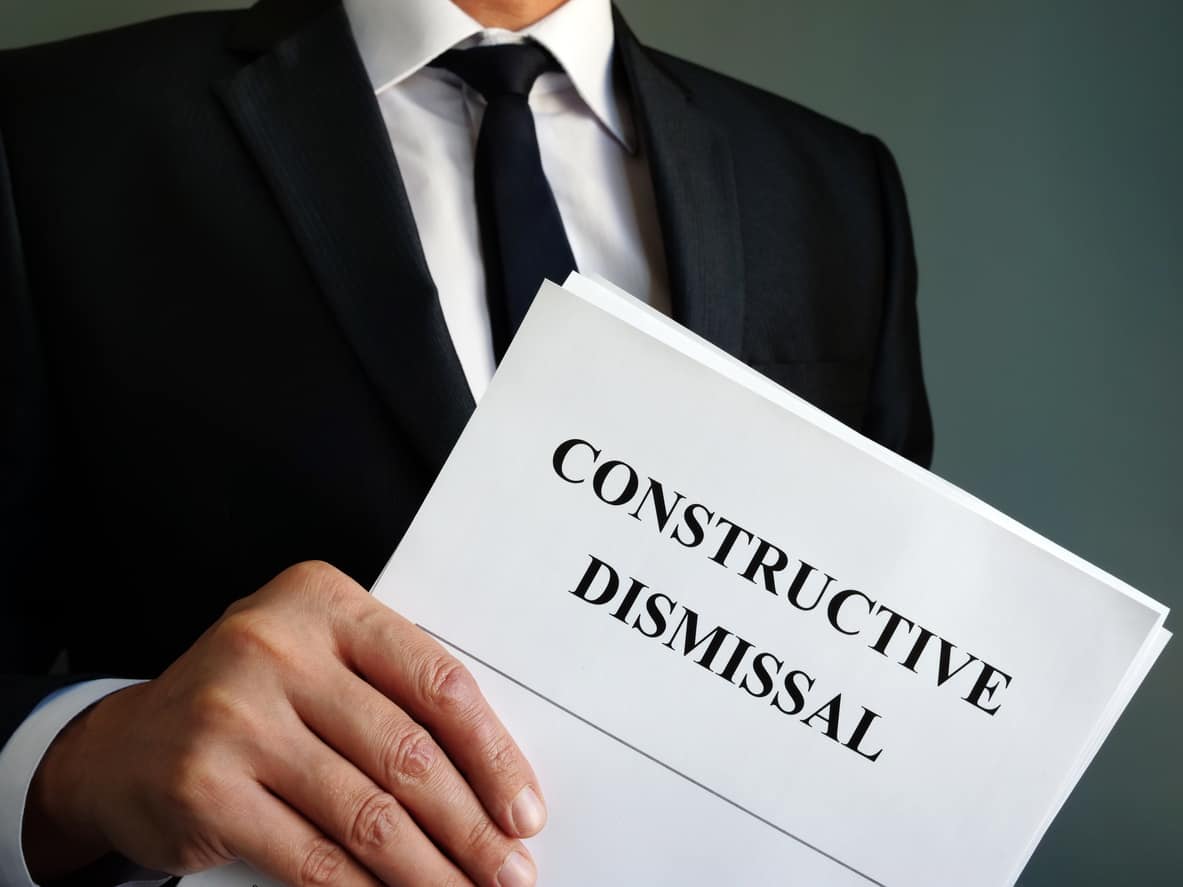Attorney advertisement by Edwin Aiwazian of Lawyers for Justice, P.C., headquartered at 450 N Brand Blvd, Glendale, CA 91203
In California, proving constructive discharge requires demonstrating that your employer intentionally created intolerable working conditions, forcing you to resign. This may involve gathering evidence of the hostile work environment. This means that despite the employee technically resigning, the law treats it as a termination initiated by the employer. If the employer’s behavior violates laws or breaches the employment contract, the affected employee may have grounds for a wrongful constructive termination claim.
Constructive Discharge in California
The laws surrounding constructive discharge in California allow for employees to sue their employer for wrongful termination even if they quit or resigned instead of being fired.
Employees who wish to claim constructive dismissal must be able to prove their former employer knowingly permitted working conditions that were intolerable and the only choice a reasonable person could make was to resign. And an employee must also show that under California law, their former employer did not have the right to fire them; and even if the employer did fire the employee, doing so would have resulted in a wrongful termination case.
California’s constructive discharge law applies to employees who have an at-will employment relationship, too.
Signs of Constructive Dismissal
Constructive discharge can be nuanced. It’s best to seek the counsel of an employment law attorney who could help decide if a constructive discharge case is valid. However, under California law, the following examples are some signs that an employee was constructively discharged.
- An employer’s acts include repeatedly yelling at their employees
- Ongoing behavior of making disparaging comments or intimidating a co-worker (or employee if the perpetrator is the boss) that violate California employment law
- If an employer reduces their employee’s position or responsibilities, and/or job role, shifts, and hours
- If an employee receives a demotion, they could argue constructive discharge
- Either the employer verbally harasses their employee or they condone intolerable working conditions.
- If an employer’s conduct effectively forces unreasonable performance evaluations upon their employees
- A constructive discharge claim can happen when a boss puts their employee at risk of injury in the workplace
How To Prove Constructive Discharge
Proving constructive discharge requires work on the part of the employee. Firstly, to successfully have a constructive discharge claim, an employee must prove their wrongful termination claim. The worker must show how they were mistreated by their employer; they must show that their employer was aware of this unreasonable behavior and/or mistreatment; that the employer failed to fix the hostile workplace environment; that the employee was forced to resign because of the hostile workplace; and that any reasonable person in the employees circumstances would have also resigned.
Simply stating that an employer was “mean” is not enough evidence. To successfully prove constructive discharge in California, an employee must prove that a California law was breached.
Can You Sue For Constructive Discharge? – FAQ
can you sue for constructive discharge? An employee can sue for constructive discharge if they can properly prove they were forced to resign from their position because they had no reasonable alternative.
can i sue my employer after I quit? Particularly with constructive discharge cases, the law of wrongful constructive termination in California allows for employees to sue their employer for wrongful termination after they quit because they had no other option. The employer had to have made the workplace conditions too intolerable for an employee to continue working there.
can an employer force you to resign? If an employer’s conduct effectively forces an employee to resign because of employment discrimination, California labor code violations, harmful working conditions, a breach of employment contract, or something else, that employee can consult with an employment attorney to bring upon a constructive termination case.
is ostracism illegal in the workplace? If an employee feels intimidated, humiliated, ostracized, or threatened at their workplace because of their race, sexual orientation, age, national origin, or another protected category, they could be working in an illegal hostile work environment. If that’s the case, the employee should consult with an employment attorney to see if they could have a valid constructive discharge case.
how to prove constructive discharge California? When proving constructive discharge, an employee must prove that a California law that would be upheld in the California courts was breached or broken by an employer. A Los Angeles employment law attorney, like the ones at Lawyers for Justice, PC, can help you compile the necessary proof needed to file a constructive discharge claim.
Is constructive discharge illegal? Constructive discharge1 is legal doctrine that holds employers and bosses accountable who knowingly created working conditions that were so intolerable for employees, they quit. The doctrine can be imperative in determining whether employees could be entitled to additional compensation from their former employer.
Attorney advertisement by Edwin Aiwazian of Lawyers for Justice, P.C., headquartered at 450 N Brand Blvd, Glendale, CA 91203
Think you deserve justice?
-
Get a Free Case Evaluation
-
Retain Service with No Upfront Cost
-
Get the Justice You Deserve
-
No Win, No Pay









